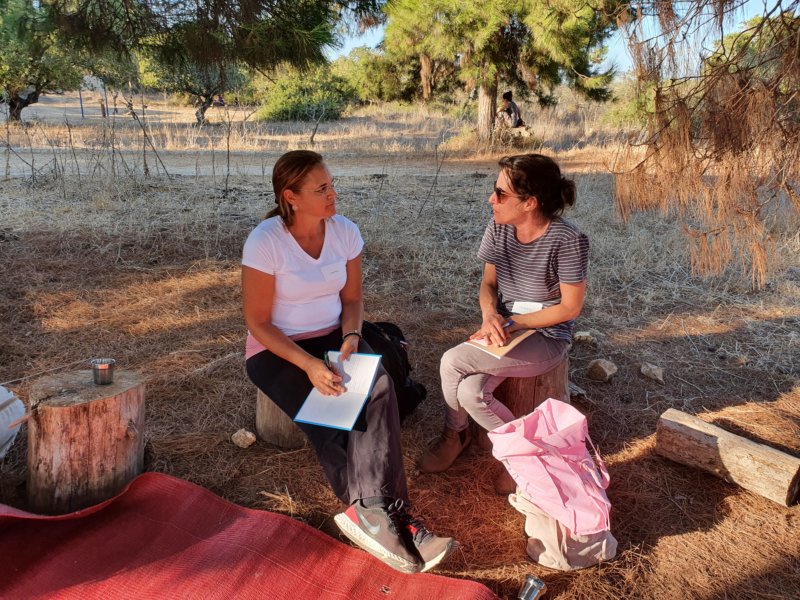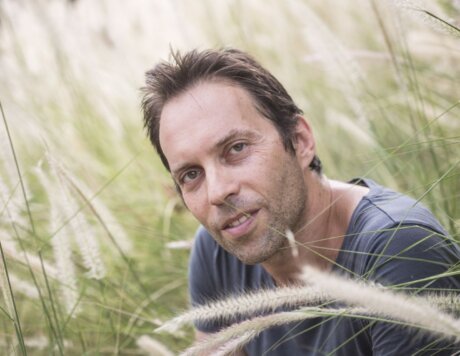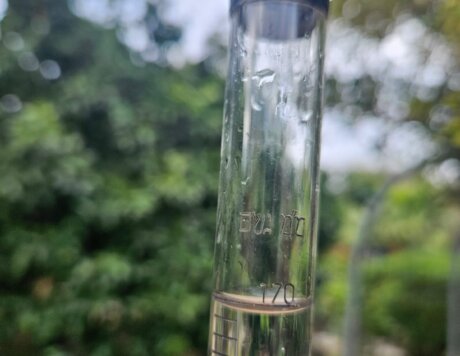
Gome is the person you think of when the words “an educator and environmentalist” are thrown into the air; in fact his name is a kind of graceful organic introduction to his being. It is obvious, of course, from his “built in” hiking pants, simple t-shirts and diction that he is a combination of the teacher you loved and the youth group counsellor you admired.
And so Gome sat with his immediate manager, Naomi Apel, who is CSO Strategy and Programmes at Ramat Hanadiv, and naturally they discussed content and strategy. Naomi challenged Gome with a particularly big question: ‘What is your next project, Gome?’ she asked.
Thus Gome was sent on a task that was all about dreaming. Many dreams encountered him along the way: establishing a training centre, maybe an academic extension dealing with sustainability, but alongside all the dreams and aspirations, Gome came to the understanding and realisation of the strengths and energy of Ramat Hanadiv, and the message that it can convey to the environmental-educational field in Israel – establishment of an R&D unit for sustainability education.
‘The idea is to develop models that are sustainable’, explains Gome, ‘in which Ramat Hanadiv’s advantage as a small, flexible, organisation rich in experience and knowledge will produce a whole which is greater than the sum of its parts.’
How does it actually work?
‘We built a model that enables us to identify a need and create a limited pilot programme for the first year (e.g., a group of school children or teachers), which is accompanied by an academic-level evaluation. If the results of the evaluation are positive we expand the pilot programme to validate the model. After two successful years of evaluation and activity, we offer and disseminate the model that we have developed and validated to additional spheres of influence, such as the Ministry of Education, local municipalities, or other environmental organisations.’

At the heart of this idea from the R&D unit is the desire to learn, investigate, and try to solve problems in the field of sustainability education, and subsequently disseminate the new knowledge and create ripples in the field of education, or in other words, to really scatter seeds like a pinecone.


A good example of the activity of the R&D unit is the mentoring programme for out-of-class learning that is run within the framework of the R&D unit. In recent years Ramat Hanadiv has promoted a forum, training courses, and conferences on out-of-class learning, but experience has taught us that without one-on-one mentoring for an educator who wants to teach outside the classroom, the chance for assimilation decreases significantly. Thus, the mentoring programme was born.
The mentoring programme has been running for about a year; through this programme, educators with background and experience in teaching outside the classroom become mentors for educators who are new to the field. The programme aims to develop a sustainable model that can be implemented throughout the country, based on internal forces in the education system for assimilating learning outside the classroom on a large scale. Of course, the programme is being accompanied by an evaluation study, by Dr. Nirit Asaf and Dr. Nirit Lavi Alon.
At the heart of this idea from the R&D unit is the desire to learn, investigate, and try to solve problems in the field of sustainability education, and subsequently disseminate the new knowledge and create ripples in the field of education, or in other words, to really scatter seeds like a pinecone.
Where did the name Pinecone come from?
‘Traditionally, in the field of education at Ramat Hanadiv,’ says Gome with a smile, ‘there is a tendency to give long names, probably out of a concern or desire to convey as many ideas or messages as possible. This time we searched for a word that would tell the story concisely. Therefore, we chose “Pinecone”.
‘Initially, the pinecone is closed and the seeds within it undergo a process of growth and ripening. Only when the seeds are ready does the pinecone open and allow dispersal of its seeds, some of which are buried in the ground and grow to produce new trees.
‘I think there is something very symbolic in this choice; it represents, in practice, the process we are striving to promote at the R&D unit.’
What is the Dream?
‘To expand our level of influence on sustainability education in Israel and to be sufficiently skilled and practiced to provide solutions for the needs and ideas arising in the field. I really hope that we’ll be able to capitalise on all of Ramat Hanadiv’s strengths and turn Pinecone into an innovative, creative, effective centre that, just like pinecones in Israel, will be very hard to ignore.’
Did you like it? Join our free mailing list to receive monthly news and updates about activities for the whole family. Register here.
Any question? We will be glad to help





